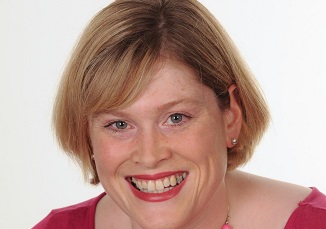Catherine Grinyer of Chartered Institute of Public Relations (CIPR) says charities need to viewing their audiences through a diversity and inclusion lens
Regardless of the sector you work for, or the part of the world you are based in, your audience is diverse. Fact. It’s made up of different ages, backgrounds, religions, sexual orientations and identities, disabilities, long-term health conditions and education-levels.
Statistically speaking 51% of the population is female, 12 million people in the UK have a disability or long-term health condition and around 12% of the population is from an ethnic minority and 8% speak English as an additional language. In short, your audience is made up of individuals who all think, feel, and respond to your communications differently.
An audience of diverse individuals poses challenges for the professional communicator (and also opportunities). To deliver mass communications campaigns, we can be guilty of making assumptions about who we are trying to reach and how best to go about it. But in making those assumptions we are often, unintentionally excluding parts of our audience.
We’re all storytellers at heart, and we’ve worked out that in an era of mass communications it’s really the human touch that counts. Charity campaigns are full of first person case studies, because they resonate – people relate to people. But are we really offering a personalised, targeted service?
What is funny for one person may be culturally offensive to the next. What is easily accessible online to you might be utterly impenetrable to people with a visual or hearing impairment.
Catherine Grinyer
Every flyer, email and newsletter you receive today will probably address you by name – in many cases by your first name. It’s smoke and mirrors of course, you’re just logged on a database with the other 10,000+ subscribers. We’re giving the illusion of personalised, targeted communications, but you’re actually getting a standard communication aimed to appeal to the ‘norm’. Whoever they are.
When it comes to communicating with people there is no such thing as ‘one-size fits all’. You don’t need to be an expert on diversity and inclusion to know that it’s hard to think of a single product, service, event or communications campaign that would meet the needs of the entire population of Scotland in one go!
What is funny for one person may be culturally offensive to the next. What is easily accessible online to you might be utterly impenetrable to people with a visual or hearing impairment.
Ask yourself how many of your organisation’s videos include audio description, subtitles or BSL interpretation? Pause to consider what ‘normal’ actually means when applied to your communications – just who is that normal person you are trying to reach?
What is normal when the average reading age in the UK is nine (think tabloid newspapers rather than broadsheet)? What is normal when at least 10% if not more of the population has dyslexia and finds it hard to access your website? What is normal when one in every 30 people has a visual impairment – and wouldn’t we all benefit from larger, clearer fonts?
We think we know our audience when actually we don’t. There isn’t a magic wand solution, but by first viewing your audience through a diversity and inclusion lens, you will be able to identify the potential attitudinal, cultural, linguistic or accessibility barriers that may prevent your audience from engaging with your organisation.
By identifying the potential barriers you can work toward overcoming them and making your communications campaigns more inclusive and more impactful.
Catherine Grinyer is chair of the CIPR Diversity Working Group and Director of Big Voice Communications. On 16 February, she will be running a CIPR Scotland event in Edinburgh on communicating with diverse audiences. To book tickets visit Eventbrite. Third sector organisations can get membership discounts by emailing [email protected].







